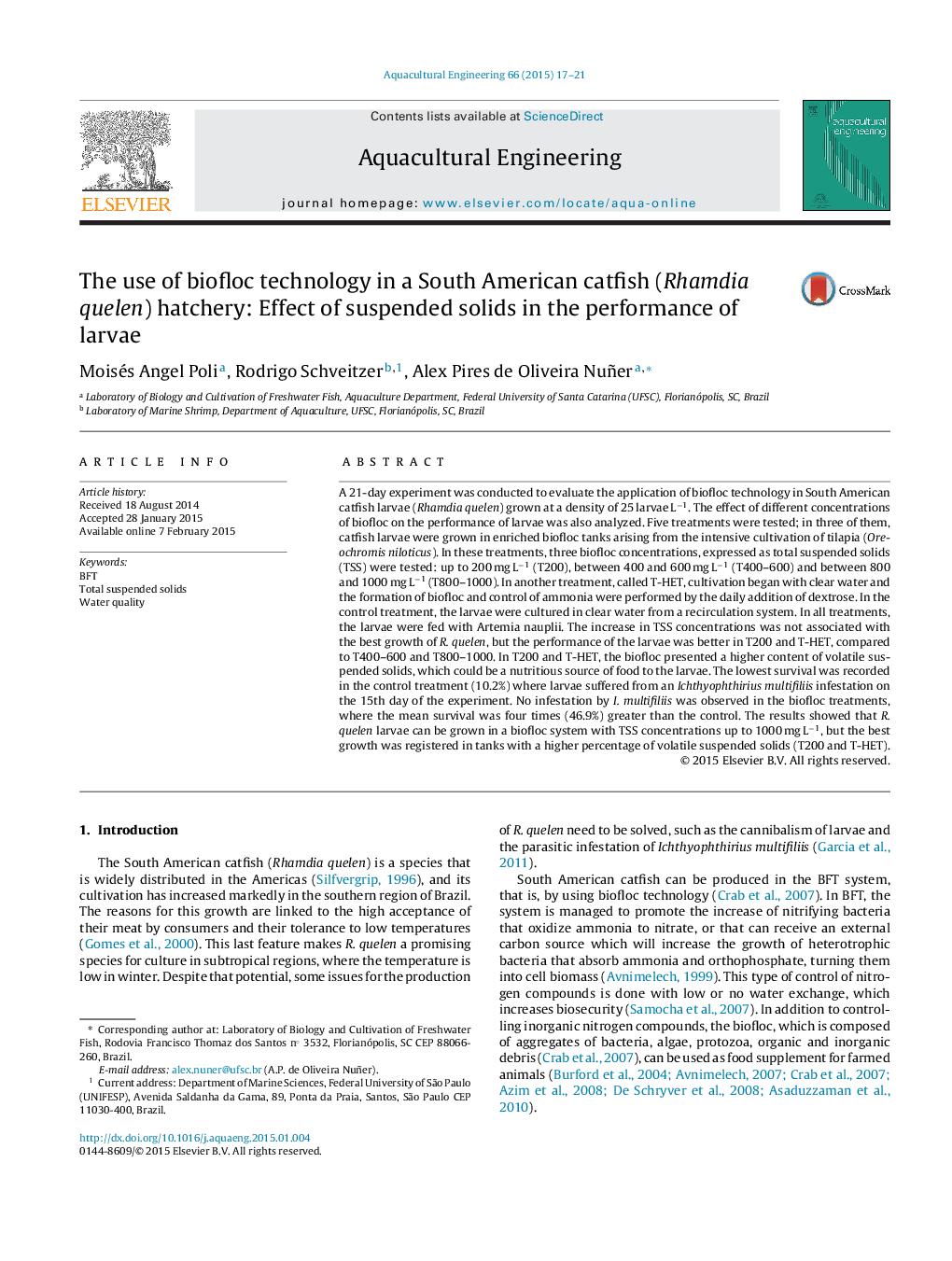| کد مقاله | کد نشریه | سال انتشار | مقاله انگلیسی | نسخه تمام متن |
|---|---|---|---|---|
| 4527178 | 1625704 | 2015 | 5 صفحه PDF | دانلود رایگان |

• BFT system was applied in the larvae culture of freshwater species Rhamdia quelen.
• A higher percentage of volatile suspended solids promoted the best growth.
• Larval survival was higher in the biofloc treatments than in clear water tanks.
• A probiotic effect of biofloc against Ichthyophthirius multifiliis is suggested.
A 21-day experiment was conducted to evaluate the application of biofloc technology in South American catfish larvae (Rhamdia quelen) grown at a density of 25 larvae L−1. The effect of different concentrations of biofloc on the performance of larvae was also analyzed. Five treatments were tested; in three of them, catfish larvae were grown in enriched biofloc tanks arising from the intensive cultivation of tilapia (Oreochromis niloticus). In these treatments, three biofloc concentrations, expressed as total suspended solids (TSS) were tested: up to 200 mg L−1 (T200), between 400 and 600 mg L−1 (T400–600) and between 800 and 1000 mg L−1 (T800–1000). In another treatment, called T-HET, cultivation began with clear water and the formation of biofloc and control of ammonia were performed by the daily addition of dextrose. In the control treatment, the larvae were cultured in clear water from a recirculation system. In all treatments, the larvae were fed with Artemia nauplii. The increase in TSS concentrations was not associated with the best growth of R. quelen, but the performance of the larvae was better in T200 and T-HET, compared to T400–600 and T800–1000. In T200 and T-HET, the biofloc presented a higher content of volatile suspended solids, which could be a nutritious source of food to the larvae. The lowest survival was recorded in the control treatment (10.2%) where larvae suffered from an Ichthyophthirius multifiliis infestation on the 15th day of the experiment. No infestation by I. multifiliis was observed in the biofloc treatments, where the mean survival was four times (46.9%) greater than the control. The results showed that R. quelen larvae can be grown in a biofloc system with TSS concentrations up to 1000 mg L−1, but the best growth was registered in tanks with a higher percentage of volatile suspended solids (T200 and T-HET).
Journal: Aquacultural Engineering - Volume 66, May 2015, Pages 17–21